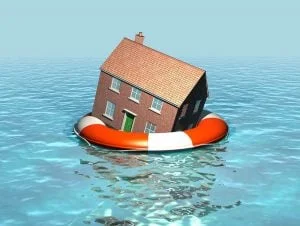Keeping Your Shed Safe in a Flood Prone Area
The recent Queensland floods have once again reminded all of us in Australia that we have to be prepared for natural disasters. While many of us always think that things like floods happen to someone else and not to us, there are also many who realise that it could be us the next time. Since we build sheds and not standard houses, we are going to talk here about how to ensure that your shed is safe from flooding, even in a flood prone area.
The first variable is whether or not you live in what is known as a flood prone area under current projections. Since there are so many different models and so many different maps and locations, we recommend that you contact your local government for their flood area maps to see if your area is considered to be flood prone.
 The current Department of Environment (DOE) document concerning floods lists the following as factors: rainfall, catchment and prior weather conditions, ground cover, topography, runoff capacity, and tidal influence. Their current standard map is based on 1% annual exceedance probability (AEP). To make a long story short, any area that is likely to flood at least once in 100 years is considered a risk area.
The current Department of Environment (DOE) document concerning floods lists the following as factors: rainfall, catchment and prior weather conditions, ground cover, topography, runoff capacity, and tidal influence. Their current standard map is based on 1% annual exceedance probability (AEP). To make a long story short, any area that is likely to flood at least once in 100 years is considered a risk area.
If you are in a risk area, there are plenty of precautions you can take. Since we are ShedSafe compliant, the short version here is that we are on autopilot, but we can definitely give you some great advice. The most important thing you can do is stay away from prefabricated, do-it-yourself sheds from the local big box store.
While cheap sheds may seem like a bargain, they are anything but in bad weather. Floods are always a “double whammy” of a storm followed by a flood. By the time flooding hits your area, there has usually been a storm, with wind and torrential rain. With a cheap shed, your belongings are probably going to be destroyed by the weather.
If the wind is strong enough, your belongings and the shed itself become projectiles that can not only damage your house, but cause severe injury or death to you and your family. Building a shed that will withstand a flood first involves building a shed that will withstand the strongest storm you can expect.
With ShedSafe, we take care of that for you. Plans are based on your calculated sustained wind load, and the materials used are strong enough to withstand most weather that you will see.
For building on flood prone land, it’s the same thing. The reason that so many people in the industry have so much confidence in ShedSafe is because they are very thorough and scientific in their approach.
To even be part of ShedSafe, we had to be reviewed by an independent third party. Every design we use is subject to being checked and documented by an independent third party structural engineer. In addition, we had to be trained to recommend the right shed for every individual situation.
In addition, all of our designs are required to comply with the recommended design guides for portal frame sheds and garages, as created by the Australian Steel Institute. As we mentioned before, we take wind load information into consideration with every building plan.
A look at what is recommended for houses reveals some similarities to what we do when we build a shed. When building a multi-level building, it is recommended to use a frame made of double brick, concrete, or steel. Ours is made of steel.
A cement slab foundation is recommended, we do that. Steel sheeting, which we also use, is recommended for roofing. It is also recommended that you incorporate water vents and flaps into the house design. This is also something that we can easily do.
The two approaches to flood proofing are dry flood proofing and wet flood proofing. Dry flood proofing tries to keep water out of the house, while wet flood proofing tries to allow water to enter through vents, and mitigate structural damage to the building in case of flooding.
Our sheds are built in a way that a flood won’t cause a lot of structural damage that can’t be fixed with minimal repairs. Our steel frames will withstand most flooding, which makes repair a simple matter of replacing whatever walls or roof were damaged.
We believe in ShedSafe; that’s why we worked so hard for accreditation. We could mention a few more specifics, but it all boils down to this: the best way to build a safe shed is to build a Shedsafe shed.



 1300 778 628
1300 778 628






